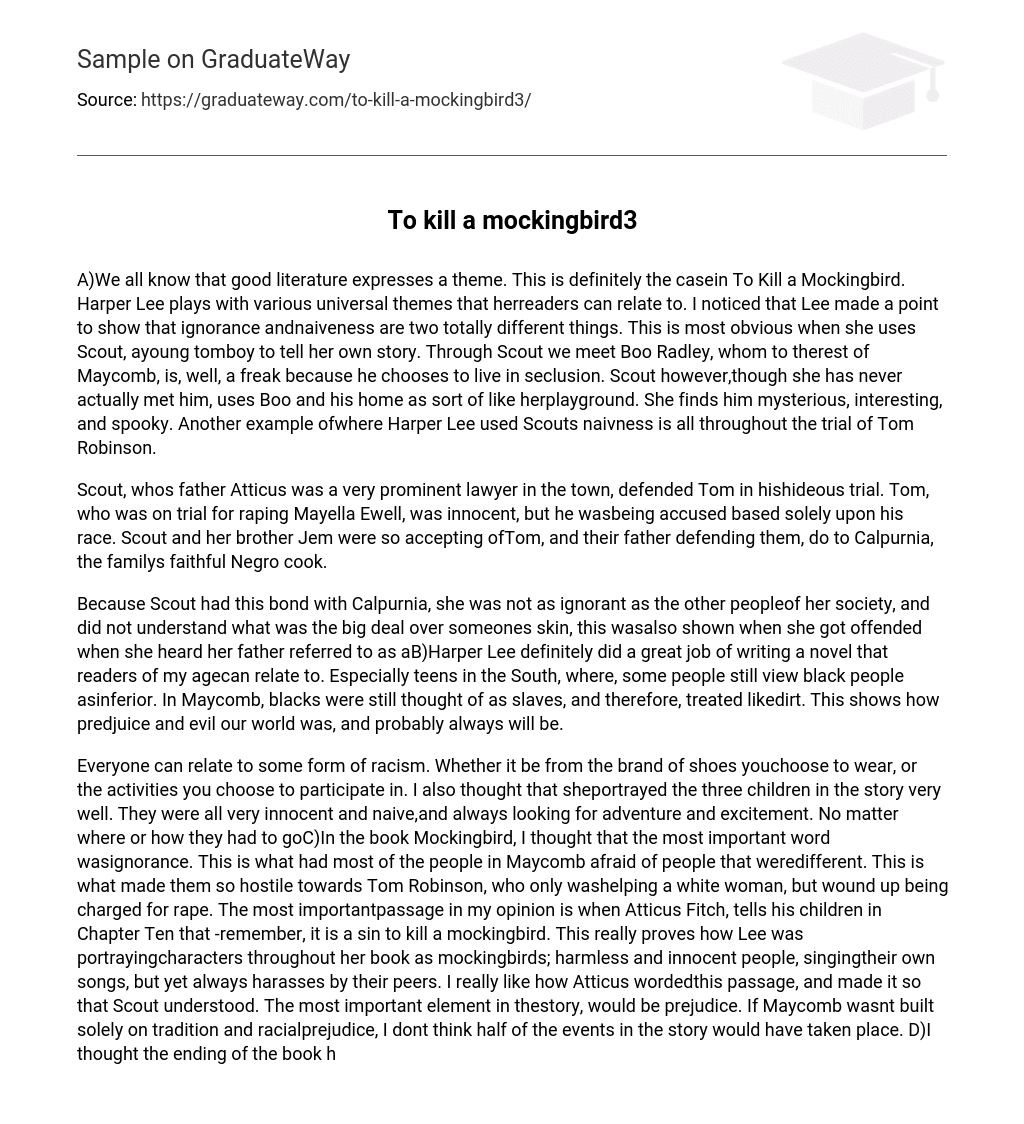In To Kill a Mockingbird by Harper Lee, the author explores various universal themes that readers can relate to. One theme that stands out is the distinction between ignorance and naivety. This distinction is evident when the character Scout, a young tomboy, narrates her own story. Through Scout’s perspective, we are introduced to Boo Radley, a recluse who is viewed as an outsider by the rest of Maycomb. Despite never having met him, Scout sees Boo and his home as her own personal playground, finding him mysterious, intriguing, and slightly eerie. Another instance where Lee highlights Scout’s naivety is during the trial of Tom Robinson.
Scout defended Tom, whose father Atticus was a renowned lawyer in town. Tom was on trial for the heinous crime of raping Mayella Ewell, but he was actually innocent and was being accused solely because of his race. Scout and her brother Jem fully embraced Tom, appreciating their father’s defense of him, thanks to Calpurnia, their family’s loyal African-American cook.
Scout’s bond with Calpurnia prevented her from sharing the ignorance of those around her and made her question the significance placed on someone’s skin color. This was evident when she took offense to hearing her father referred to as “a(n) B)”. Harper Lee skillfully crafted a novel that resonates with readers of my generation, particularly teenagers in the American South where some still hold views of black people as lesser. In Maycomb, blacks were still regarded as slaves and treated with contempt. This illustrates the pervasive prejudice and malevolence present in our world, which may persist indefinitely.
In Mockingbird, the portrayal of the three children was exceptional as they were depicted as innocent, naive, and constantly seeking adventure. Regardless of the situations they encountered, a constant theme in the book was ignorance that fueled fear and hostility towards those who were different in Maycomb. This ignorance ultimately resulted in unjustly charging Tom Robinson for rape, despite his intention to assist a white woman.
The passage I find most significant is when Atticus Fitch imparts to his children in Chapter Ten that it is a sin to kill a mockingbird. This highlights how Lee presents characters throughout her book as mockingbirds – harmless and innocent individuals who are constantly harassed by their peers. I appreciate how Atticus worded this passage and made it understandable for Scout. Prejudice is the paramount element in the story. If Maycomb didn’t prioritize tradition and racial discrimination, I believe that many of the events in the story would not have occurred. D) The book’s ending had numerous unexpected twists and turns. Although I had anticipated Boo Radley eventually making an appearance, Harper Lee executed it brilliantly. We witness Scout’s change in perspective and her realization that Boo Radley is actually a good person. It was wise for Atticus not to bring Boo to court as I don’t believe he committed the crime. Additionally, it was absolutely terrible that Tom Robinson was falsely accused, but his release would have detracted from the novel’s drama. I admired how Harper Lee portrayed Scout’s profound maturity and growth through her experiences.





